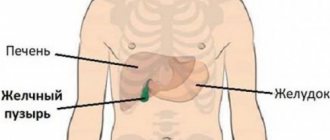Having discovered signs of blood in the child’s stool, parents tend to experience a feeling of panic. It looks scary, but in most cases, the presence of blood in the stool does not indicate a serious illness and is not dangerous. Sometimes many babies have symptoms of rectal bleeding (clots, streaks, drops of blood) that do not affect their overall tone and health. However, extremely rarely, bleeding can be a sign of a serious illness and ignoring this fact is dangerous for the child’s health. Only a pediatrician can discover the reason why a child has blood in his stool and how to treat a possible disease, after examination and research.
Blood in the stool in infants and young children
In infants and newborns, blood in the stool may be due to the following reasons:
- Ingestion of mother's blood during childbirth (newborns)
- Ingestion of blood by infants during breastfeeding from the mother's cracked nipples
- Microbial contamination of the infant intestine
- Allergy to certain foods (usually to proteins contained in cow's or goat's milk)
- Infectious intestinal diseases (dysentery, amoebiasis, rotavirus infection, salmonellosis, shigellosis, giardiasis)
- Antibiotic-associated diarrhea
- Lactase deficiency
- Intussusception
- Congenital intestinal diseases (Hirschsprung's disease, Meckel's diverticulum)
- Anal fissures (for chronic constipation)
- Lactase deficiency
- Trauma or foreign body
Recommendations on what to do:
If bloody stool appears in a child of the first year of life, you should consult a doctor as soon as possible
Signs and causes of blood in baby's stool
In childhood, the formation of the digestive system and immunity is not complete, the vascular tissue of the intestinal tract is much more delicate and the appearance of bloody discharge can be caused by simple gastrointestinal dysfunction. In an infant, the cause of blood in the stool may be damaged and bleeding nipples of the nursing mother. Mother's blood is not dangerous for the baby, but pumping and a temporary transition to artificial feeding are recommended. However, a more common cause of blood is damage to the mucous membrane of the digestive tract. The child’s delicate vascular system may not be able to withstand the movement of feces, spasms, stress, or the influence of infections.
Pediatric practice distinguishes specific signs and causes of blood in a child’s stool, characteristic of childhood. The composition and color of blood discharge allows us to determine which parts of the gastrointestinal tract provoke bleeding, which facilitates diagnosis and further treatment.
Causes of stool streaked with blood
The presence of bloody streaks in the stool indicates bleeding from the upper intestinal tract. The pathology may be accompanied by loose, frequent stools with mucus, a rash may appear, and the baby does not gain weight. With the listed symptoms, the cause of blood-streaked stool is an allergy to milk or soy protein. Other products can also trigger an allergic reaction. Allergies cause inflammation in the intestines, small blood vessels become excessively fragile and form streak-like formations in the stool.
Blood clots in stool
The appearance of blood clots in the stool is a consequence of the formation of blood clots in places where small vessels have burst. This symptom in children indicates advanced dysbiosis, which occurs as a result of:
- disorders in the diet of young children;
- unjustified use of antibiotics;
- weak immune system.
The disease is accompanied by decreased appetite, bloating, loose stools with mucus, and possible diathesis.
Scarlet blood in stool
The presence of fresh, scarlet blood stains in a child’s stool often indicates anal fissures that arise from constant “straining” when passing hard feces. Bright, red spots are visible on top of the stool, and the baby experiences pain during bowel movements.
Scarlet blood in the stool is the main symptom of the formation of polyps in the large intestine. Polyp is a benign growth on the wall of the colon. The pathology is observed in children under 7 years of age, rarely, but it occurs in infants. There are no changes in the child's behavior; there are no signs of pain during bowel movements.
Stool with blood and mucus
The presence of mucous and bloody discharge in the stool may indicate the presence of parasitic microorganisms (helminthic infestations) in the child’s intestines. Stool with blood and mucus is observed when a viral or bacterial infection penetrates. Infection with salmonellosis, staphylococcus, rotavirus (intestinal flu) causes profuse loose stools with foamy mucus and blood. Much less often, abundant mucus and blood in the stool can be observed with hereditary and genetic pathologies in the child’s body, or the development of malignant neoplasms.
Traces of blood in a child's stool
The observation of any traces of blood in children's stool has a wide variety of reasons; in any case, only a pediatrician can make the correct diagnosis. This pathology also depends on the age category of the child; for example, the accumulation of gases in a newborn can cause small blood streaks in the stool due to rupture of small vessels in the intestines. In such a situation, traces of blood in the child’s stool are rare and do not recur. Infants often have a lack of vitamin K, which is responsible for blood clotting. Frequent traces of blood may indicate a hemorrhagic disease. Timely measures taken will prevent danger; you need to give your child a course of vitamins.
Black poop (occult blood)
In the first year of life, with the transition to a mixed diet, the child’s stool may turn black. This situation is not a pathology and can be explained by the inclusion of iron-containing fruits and vegetables or new mixtures with a high iron content in the child’s menu. Vitamin complexes "Vitrum" and activated carbon, when consumed, also give children's feces a black tint. Parents need to carefully monitor their child's diet, as black poop can also mean hidden bleeding. Dark stools with signs of general weakness, dizziness and abdominal pain indicate bleeding in the gastrointestinal tract. Additionally, there is an increase in temperature, nausea, and even vomiting. The case requires immediate medical attention; it is impossible to stop internal bleeding on your own. Bloody discharge in a child's intestinal tract may occur as a result of swallowing a sharp fish bone or any object.
Other reasons
Another dangerous reason for the appearance of blood in the stool is the presence of a congenital pathology - intestinal obstruction or intussusception. The popular name is “volvulus”. Abnormal development of the intestine leads to overlap of the lumens in its sections with other parts. As a result, partial or complete obstruction. Signs of the disease appear quite sharply: the baby is very worried and screams immediately after eating, there is a rise in temperature and intense vomiting. The stool takes on the consistency of raspberry-colored jelly. The child’s condition may worsen in a short time; an ambulance must be called urgently. Delay in medical assistance will lead to shock and possible death.
Prevention
Preventive measures in this case will include proper nutrition, rich in fiber and dairy products. Proper drinking regime is also very important. Nursing mothers should monitor their diet, avoiding the consumption of foods that can cause allergic reactions. To prevent infectious diseases, you need to ensure that the child washes his hands after a walk, does not lick his fingers and does not eat unwashed fruits and vegetables. Systematically inspect the anal area for damage and cracks. It is necessary to carefully monitor your child’s condition and, at the first suspicious symptoms, contact a medical facility for examination and undergo the necessary tests. After all, many diseases can be treated quite successfully if detected early. In some cases, delay can threaten the health and life of the baby.
First aid
- If possible, try to save feces with dangerous inclusions until the doctor arrives. This will help him quickly assess the picture of the disease and make the correct diagnosis.
- You should not try to feed the baby, it will not do him any good. The maximum that can be offered to a child in this condition is white bread crackers and carrot puree diluted with water.
- But be sure to give your baby something to drink. Dehydration with diarrhea can occur very quickly, and this is a very dangerous condition that can lead to serious health problems, including death. So, let’s give the child plenty of clean water. Ideally (especially if the baby is nauseous) it would be to give him something to drink little by little (10-15 mg), but often (every 5 minutes).
- Water can (and even should) be replaced with a water-salt solution, for example, Regidron or Oralit. Such solutions not only prevent the onset of dehydration, but also replenish beneficial salts, which during diarrhea do not have time to be absorbed in the intestines, but are washed out along with water. A water-salt solution can be prepared at home. To do this, per liter of water you need to take two tablespoons of sugar, two teaspoons of salt and half a teaspoon of baking soda.
- If the baby has a high temperature, and there is still a long time before the doctor arrives, you need to bring it down. For this purpose, use any antipyretic drugs based on paracetamol that are appropriate for your age.
- Wash your baby thoroughly after each attack of diarrhea.
- Do not give your baby any medications other than antipyretics. However, sorbents and preparations that will help cleanse the child’s body of harmful substances and toxins are also acceptable. Sorbents include Smecta, Enterosgel, Polyphepam, Polysorb. Choose a product based on the child’s age.
- If the doctor suspects an intestinal infection, be prepared to take your baby to the hospital. Therefore, it will not be superfluous to prepare all the documents and things necessary for the first time.
Pulsation in the head: how it manifests itself, what it is and why it happens, and what diseases it is associated with
Diagnostics
If you notice any of the above signs, you should contact your pediatrician as soon as possible. He will decide to refer you to one of the highly specialized specialists - an infectious disease specialist, proctologist, gastroenterologist or allergist.
Typically, the examination begins with a rectal examination, with the help of which the doctor can determine the cause of the appearance of blood in the stool.
Laboratory tests are mandatory - general blood tests, urine tests, stool tests and coprogram (volumetric study of all stool indicators), analysis for dysbacteriosis.
Then instrumental diagnostic methods may be required. These include:
- ultrasound examination of the abdominal organs or other necessary organs;
- X-ray examination;
- fibrogastroduodenoscopy – examination of the upper parts of the digestive tract with a special device and others.
Causes of bloody diarrhea in a child
Loose stools with blood in a child are not an independent disease, but a set of symptoms that accompany the course of various pathological processes. In this situation, diarrhea, which has a number of age-related characteristics, may vary in the frequency of bowel movements and the volume of feces. This is primarily determined by the nature of the disease that caused it and the localization of intestinal bleeding.
The most common causes of bloody diarrhea in a child include:
- acute intestinal infections (dysentery, salmonellosis, escherichiosis, Proteus/staphylococcal/rotavirus infection, etc.);
- parasitic diseases (amoebiasis, giardiasis, helminthiasis);
- intolerance to cow's milk, soy (can develop in formula-fed infants);
- reaction to certain medications;
- internal hemorrhoids (a consequence of congenital dilatation of hemorrhoidal veins, prolonged sitting on a potty, strong prolonged crying, etc.);
- juvenile polyps (benign neoplasms). Identified at the age of 4–7 years. When introduced into the intestinal lumen, they can cause mild diarrhea with blood in a child;
- Crohn's disease (chronic inflammatory bowel disease);
- ulcerative colitis (inflammation of the colon mucosa). Usually occurs in school and adolescence, less often in children of the first year of life;
- systemic lupus erythematosus (autoimmune pathology of connective tissue and blood vessels). In some cases, it may be accompanied by diarrhea streaked with blood.
Addition of other symptoms
Under certain conditions, when a child develops diarrhea with blood and mucus, urgent hospitalization and refusal of amateur treatment are necessary. Aggravating symptoms include the following symptoms: frequent, prolonged watery diarrhea with blood and mucus; temperature increase is more than 38°C; dry lips and oral mucosa; profuse vomiting; obvious symptoms of intoxication; rash on cheeks.
Diarrhea with blood and mucus, fever and vomiting indicate the presence of an acute viral infection, severe food poisoning or worsening exposure to helminths. Pathological diarrhea accompanied by skin rash, bloating, weight loss can be caused by dysbacteriosis, enzyme imbalance, and metabolic disorders. In this case, the temperature does not rise, but the duration of diarrhea increases significantly.
These main factors may be joined by other reasons:
- stress;
- inflammatory reactions in the mucous membrane of the stomach, intestines, esophagus;
- excessive consumption of products with a laxative effect;
- allergies to certain foods;
- enzyme and lactose imbalance;
- congenital pathologies of the digestive system in infants;
- injuries from penetration of foreign bodies;
- use of certain medications.
Complicated diarrhea can also be caused by teething. For this reason, initial diarrhea is of a neuro-reflex nature and is not accompanied by dangerous discharge. However, when the gums are irritated, the baby puts dirty hands into his mouth, causing an infection, which, in turn, causes an intestinal infection. As a result, blood and mucous impurities may appear that are already infectious in nature.
//www.youtube.com/watch?v=zHLhUYVdnDs
One of the most common causes of blood and mucous impurities in a child’s diarrhea is gastroenteritis. With this pathology, an infection of the stomach and intestinal walls occurs, causing watery liquid stool with blood streaks, mucus and a pungent odor. The pathology is accompanied by a significant increase in temperature, weakness, malaise, and vomiting.
Complications
In the absence of adequate treatment, pathological conditions that cause the presence of blood in a child’s stool can provoke the development of serious complications that will threaten the health and life of the baby.
- Scars in the anal area. This can occur with frequent occurrence of microtraumas of the rectum.
- Development of infections. With constant damage to the skin and mucous membranes, pathogenic bacteria can enter the wounds, which can spread to the genitals, thereby worsening the situation.
- Crohn's disease and colitis can cause intestinal obstruction.
- Prolonged internal bleeding is life-threatening.
Dangerous symptoms
It happens that in addition to the appearance of blood in the stool, a 2-year-old child develops additional signs that can be used to judge the development of pathological conditions in him. Symptoms that, if detected, should immediately contact a medical facility include:
- increased body temperature;
- prolonged constipation;
- prolonged headache;
- the appearance of signs of an allergic reaction - for example, a rash;
- detection of helminths in feces;
- abdominal pain;
- disturbance of consciousness;
- abdominal cramps;
- painful bowel movements;
- detection of feces with mucus and blood in a child;
- refusal to eat;
- vomit;
- rapid weight loss.
hidden blood
If certain diseases are suspected, one of the main diagnostic methods will be an analysis for the presence of occult blood in the child’s stool. This condition is called sideropenia and does not manifest itself by external signs. To carry out the analysis, special sensitive substances are used, which, when oxidized, change their color.
A few days before the procedure, you need to follow a diet that excludes meat dishes, cucumbers, cabbage and some other foods. You should also stop taking medications as prescribed by your doctor. This is necessary so that hidden blood is not detected in a healthy baby. The stool must be placed in a sterile jar and delivered to the laboratory within three hours.
Treatment
If, while breastfeeding, the baby develops blood streaks in the stool, therapy depends on the cause that provoked the syndrome. To make it easier for the doctor to make a correct diagnosis, it is better to save some of the newborn’s stool and show it or take a photograph where bloody spots are visible in the stool. Before prescribing any treatment, you will have to undergo the necessary examinations, which are described below.
Diagnostics and tests
To exclude less dangerous diseases during breastfeeding, such as dysbiosis, helminthiasis and ingestion of blood due to cracks in the mother’s nipples, an analysis is performed for dysbiosis, worm eggs and the Apta-Downer test. The latter technique allows you to distinguish blood in the stool that belongs to the baby from the mother’s ichor. To do this, the required part is isolated from the baby’s feces and mixed with a sodium hydroxide solution in a centrifuge. If the mixture turns brown, the blood belongs to the mother, her hemoglobin is present; the preservation of the pink color indicates the presence of the child’s hemoglobin. Blood and urine are also taken for general analysis.
Research methods are as follows:
- Coprogram. To make a diagnosis, the presence in the stool, in addition to blood, of mucous inclusions, undigested breast milk, and remnants of red blood cells is determined. The method is fundamental in the diagnosis of intestinal diseases.
- Coagulogram. It is carried out to confirm or refute bleeding disorders. Prothrombin and thrombin time, fibrinogen are determined.
- Gregersen reaction. Before donating blood, the baby is not fed meat if he is mixed-fed. Allows you to determine hidden blood that is not observed in the stool.
- Tests for lactase deficiency. It is determined how many carbohydrates are contained in the child’s feces, hydrogen in the air exhaled by the baby after lactose has entered the body (breath test), and the process of absorption of D-xylose is assessed.
Additional hardware and laboratory testing techniques depend on the preliminary diagnosis. So, if intestinal obstruction is suspected, an x-ray with a contrast agent is performed.
Treatment methods
The principles of treatment for bloody streaks in the stool depend on the cause that caused the appearance of the alarming sign:
- frequent constipation, leading to cracks in the intestinal and anal mucosa, can be eliminated by adjusting the mother’s diet if the newborn is breastfed and by revising complementary foods with mixed feeding;
- intestinal obstruction is treated surgically, the doctor performs manual straightening of the intussusception;
- therapy for intestinal infections is based on rehydration and antibiotics;
- an allergy to cow's milk is eliminated by replacing it with a highly adaptive hypoallergenic formula, and when breastfeeding, by correcting the mother's diet;
- lactase deficiency is treated by administering lactose-free baby food to the baby - Nutrilon, Humana, Enfamil;
- treatment of hemorrhagic disease is carried out by introducing into the body a synthetic analogue of vitamin K - the drug Vikasol;
- rectal polyps, including juvenile ones, are assessed in terms of size and danger to the baby’s health - the decision on the need for removal is made by the doctor;
- helminthic infestations are treated by taking antiparasitic drugs in children's dosages, maintaining hygiene and limiting contact with the source of infection (it is necessary to deworm pets, boil bed linen, and disinfect the premises).
These are the treatment methods necessary for the appearance of bloody streaks in the stool of infants. Additional medications and methods will be prescribed by the attending physician, depending on the provoking factor.
If it is not possible to immediately determine the cause of the appearance of blood in the baby’s stool, it is better not to refuse hospitalization. In a hospital setting, mothers will be helped to establish the feeding process, monitor the child’s condition, and carry out a wide range of diagnostic procedures. This applies to situations where blood in the stool is accompanied by insufficient weight gain in the infant, poor sleep and appetite, and signs of abdominal pain. Even in the absence of danger symptoms, bloody spots in the baby’s stool should not go unnoticed by parents and pediatricians.
Normal stool in a child
Normally, a baby’s feces before the introduction of complementary foods are mushy, light brown, and may be yellowish or orange. Sometimes white lumps resembling cottage cheese are observed. Its smell is not disgusting, it is similar to sour milk. In breastfed children it is more liquid, “artificial” children go to the toilet regularly. Their stool is denser, sticky, and has a distinct odor.
It happens that foam and a little mucus appear in the child’s stool, and they become greenish. If this happens once and does not happen again, there is no cause for concern. Usually this is a reaction to foods eaten by the mother, or a signal that the formula is not suitable for the baby. Also, mucus, for example, can be observed during teething in a baby, especially if during this period the child has clear and profuse snot.
A baby in the first month of life poops after almost every feeding; as it gets older, the frequency of bowel movements decreases. Usually a child on guardianship goes to the toilet 2-3 times a day, and the absence of bowel movements is allowed for up to 10 days. At the same time, the baby should remain calm, eat and sleep well, if you feel his stomach, it will be soft and painless.
Note! Formula fed babies poop regularly. If there is no stool for more than two days, you should take action.
Formula-fed babies often suffer from constipation.
After becoming familiar with adult food, the baby's stool becomes more formal and dark. The smell changes, it depends on the products consumed by the baby. If the baby continues to drink breast milk, the stool may still resemble mush, the main thing is that it remains on the surface of the diaper and is not absorbed into it, otherwise the baby will be diagnosed with diarrhea.
Non-pathological causes
In addition to the above reasons, the coloring of stool in dark, blood-like shades can be caused by the child’s consumption of certain foods and medications. These include:
- beet;
- chocolate;
- bird cherry;
- blueberry;
- tomatoes;
- products containing food coloring;
- black currant and others.
Medicines that can cause changes in the color of stool include:
- iron-containing preparations;
- Activated carbon;
- some types of antibiotics.








